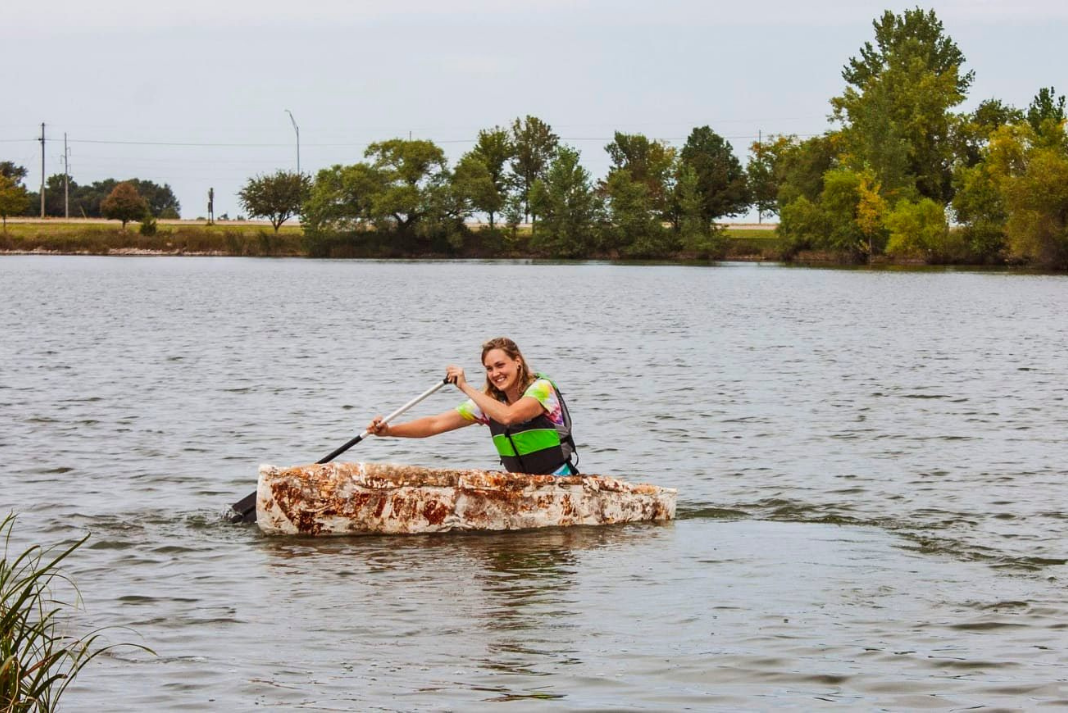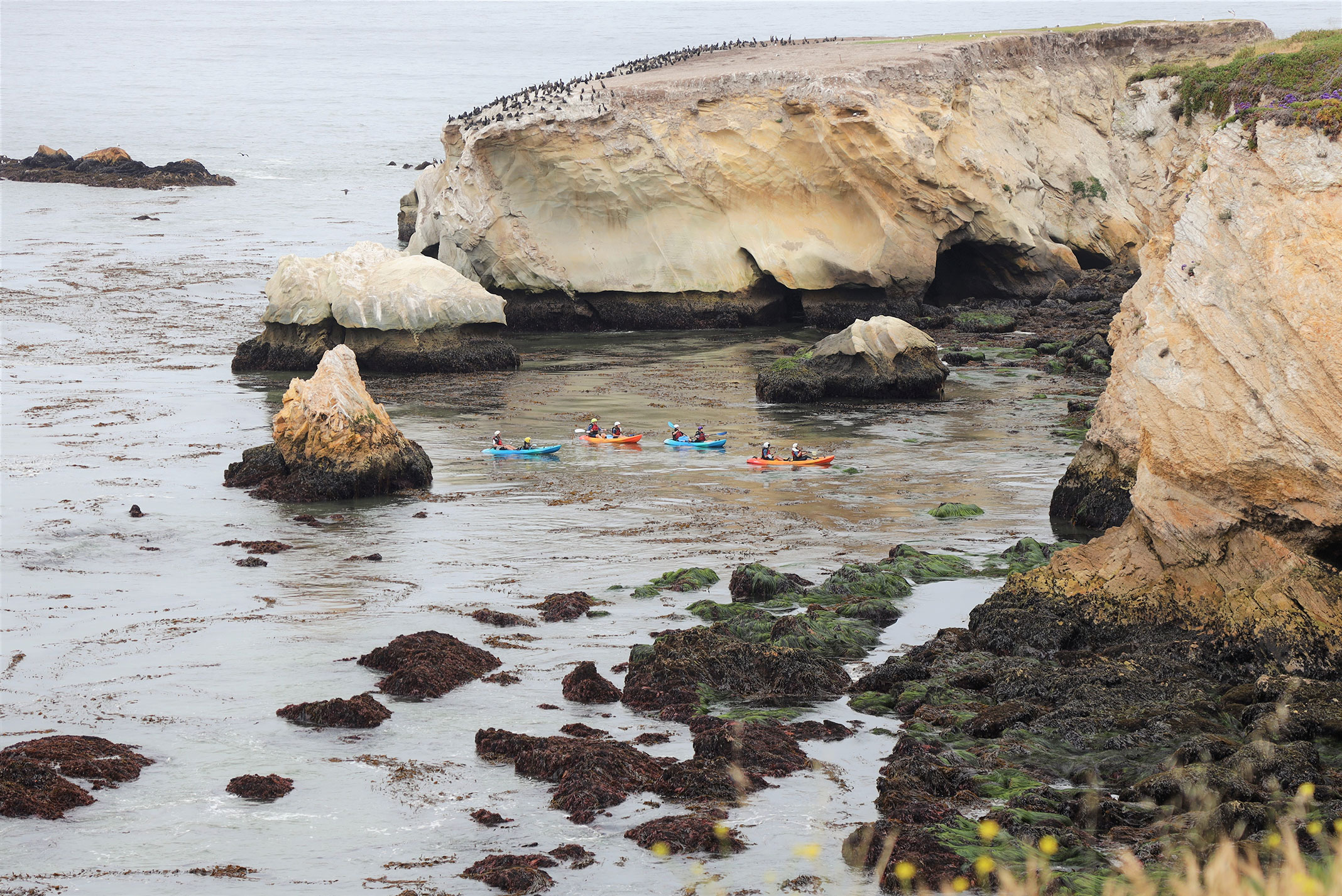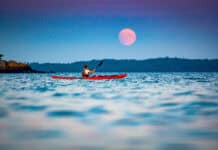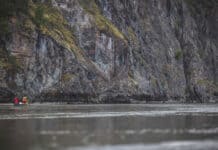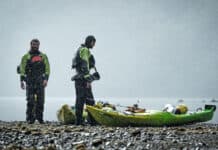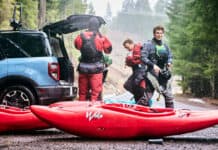The harbor of Long Beach, California has seen its share of remarkable vessels, but perhaps none as intriguing as the one Los Angeles artist Sam Shoemaker launched on its waters. Shoemaker recently caught the attention of social media with images of a full-size mushroom kayak grown in his studio and bravely brought to a marina adjacent to the second busiest port in the U.S. for a float test.
Sam Shoemaker and the mushroom kayak
More specifically, Shoemaker’s kayak is made of the mycelium of a polypore, a shelf fungus, harvested from near his place in Los Angeles. Mycelium is the vast, interconnected, thread-like root network of a fungus that often stretches well beyond the fruiting bodies we see above ground that make their way to grocery aisles. The mycelium of fungus can grow to thousands of acres. With this kind of potential, Shoemaker saw the opportunity to mix art, science and paddling.
“I think that it’s really meaningful for people in the creative community to explore what is possible with these mushrooms,” Shoemaker shared. “And I feel that maybe our understanding of mycelium and how it can be used in these applied ways are pretty rudimentary.”
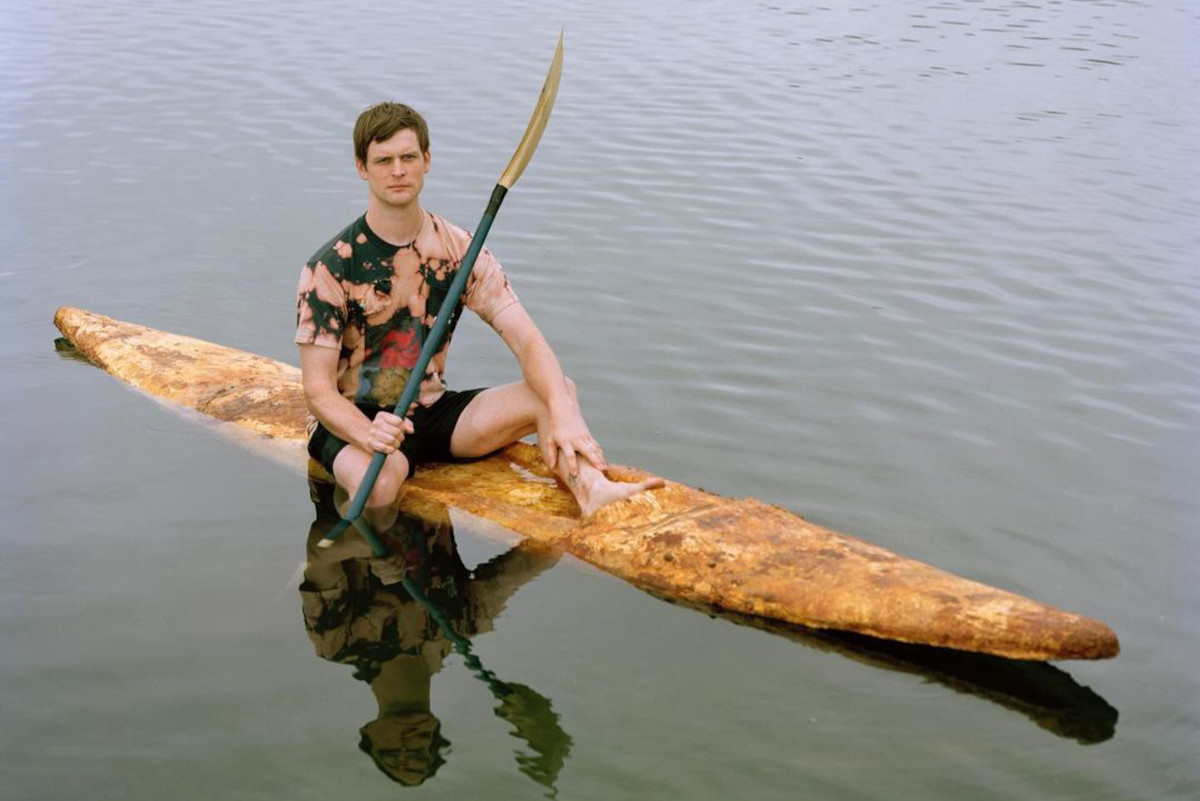
Ever incredible fungi
Fungi has shown promise in experimentation as an alternative in industrial applications such as packaging and building materials, even for textiles in the fashion industry. The draw: it is natural, renewable, benefits environmental impact, and to speak to that point further, fungi are decomposers capable of storing carbon.
As a student more than a decade ago, Shoemaker heard of an artist Phil Ross who was creating art installations with mushrooms grown on agricultural byproducts. The idea was fascinating to Shoemaker and the spore to pursue fungi art sprouted. Shoemaker has used the growing organisms as the medium of his sculpture work—which have regularly featured geometric shapes built with molds, then exploding outwardly with fungi. Now his myco sculptures have evolved to a working art taken to the harbor.
“using a wild mushroom collected off the streets of Los Angeles to build a 15-foot boat is a very impractical thing to do.”
A kayak grows in Los Angeles
For Shoemaker, the first step to growing a boat was finding a kayak design to use as a template. He connected with his muse where many others have, on Craigslist. The design, a Malibu Kayaks CK 4.4, a 14-foot sit-on-top from a now defunct brand. Shoemaker used the Craigslist find to produce a two-part mold inside of which he placed hemp as a substrate for the mycelium to consume and grow on. It took just four weeks for Shoemaker’s kayak to reach size. He then dried it in an oven to a cork-like hydrophobic material and coated it with beeswax to seal it. Once complete, the kayak weighed in at 135 pounds.
Shoemaker acknowledged he’s not the first to have pioneered mushroom paddlecraft. That title likely belongs to fellow mycophile Katy Ayers, who showcased her mushroom canoe at the Nebraska State Fair in 2019 and has since gone on to a Fulbright scholarship in advanced biological sciences.
“Katy put a really good and interesting idea into the ether,” Shoemaker credited. “And there’s always been talk of mushroom surfboards. I’m doing things a little bit differently than the way Katy built that boat. I thought it would be interesting to apply some of these different ideas to that idea and do something that could be used on the ocean.”
With the help of friends, Shoemaker carried the mycelium boat of his own to the water in Long Beach and proved he had something that floats.
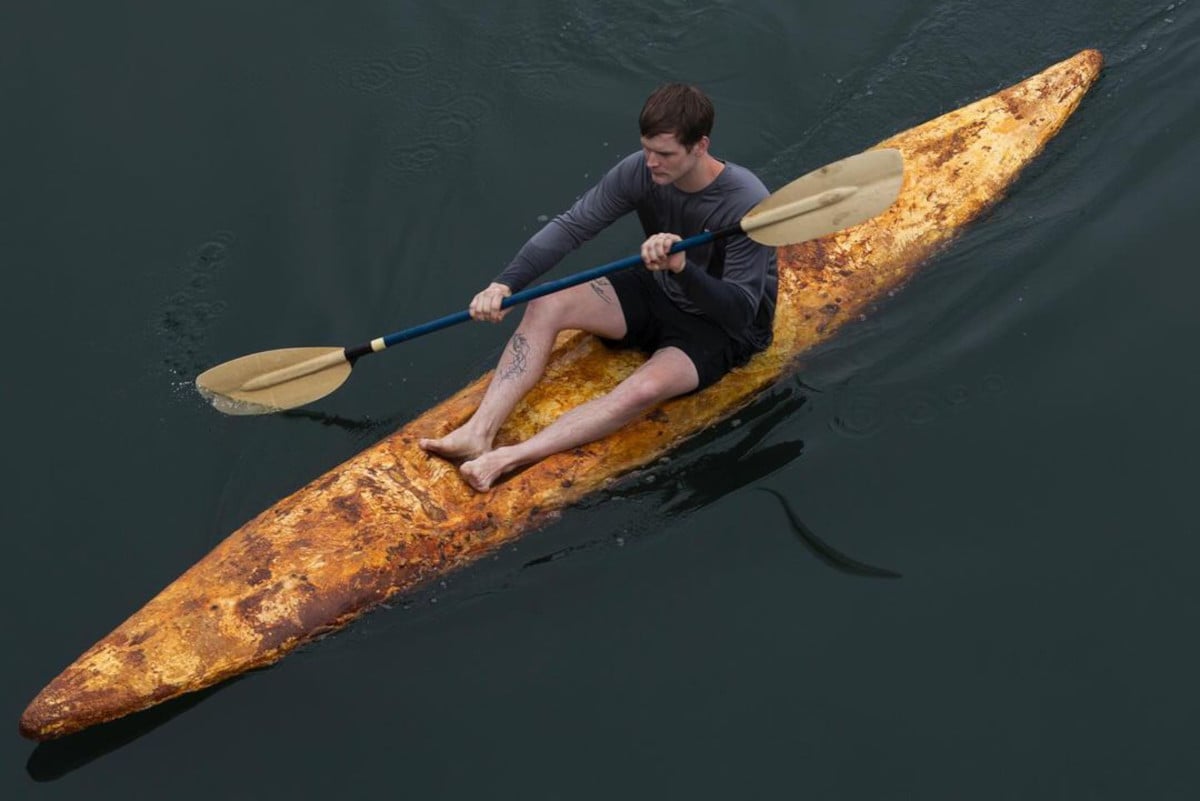
Seaworthy mycelium
The artist’s post about the successful launch drew more attention than he ever could have imagined. There were plenty of wowed responses, and along with those, plenty of critiques. Some said it was no kayak but a baguette. Others questioned the hefty weight. Aspects Shoemaker openly agreed are part of the process of bioengineering his vessel.
“People have reached out to me about the boat to say, ‘That seems quite heavy and impractical,’ to which I say, using a wild mushroom collected off the streets of Los Angeles to build a 15-foot boat is a very impractical thing to do. If anything, I’m relieved that it only weighs 135 pounds.”
To Shoemaker’s defense, a kayak’s weight is not completely tied to its buoyancy and capability if the design and materials are sound. Popular fishing kayak models today easily tip the scale well beyond 100 pounds.
Shoemaker considers his mushroom kayak a prototype toward a larger goal—producing a craft capable of making the 22-mile open water crossing from L.A. to Catalina Island. The artist was quick to point out this is something he will spend ample time preparing for and will be accompanied by an experienced support crew. Shoemaker hasn’t gotten ahead of himself, however. For now, he has returned to the studio to tinker with his methods and grow more kayak designs if he’s to make the attempt.
“I’m not interested in making props. I want to go on a journey. I want a boat that can actually be used for something.”
Paddle safe and responsibly, always wear a life jacket.


